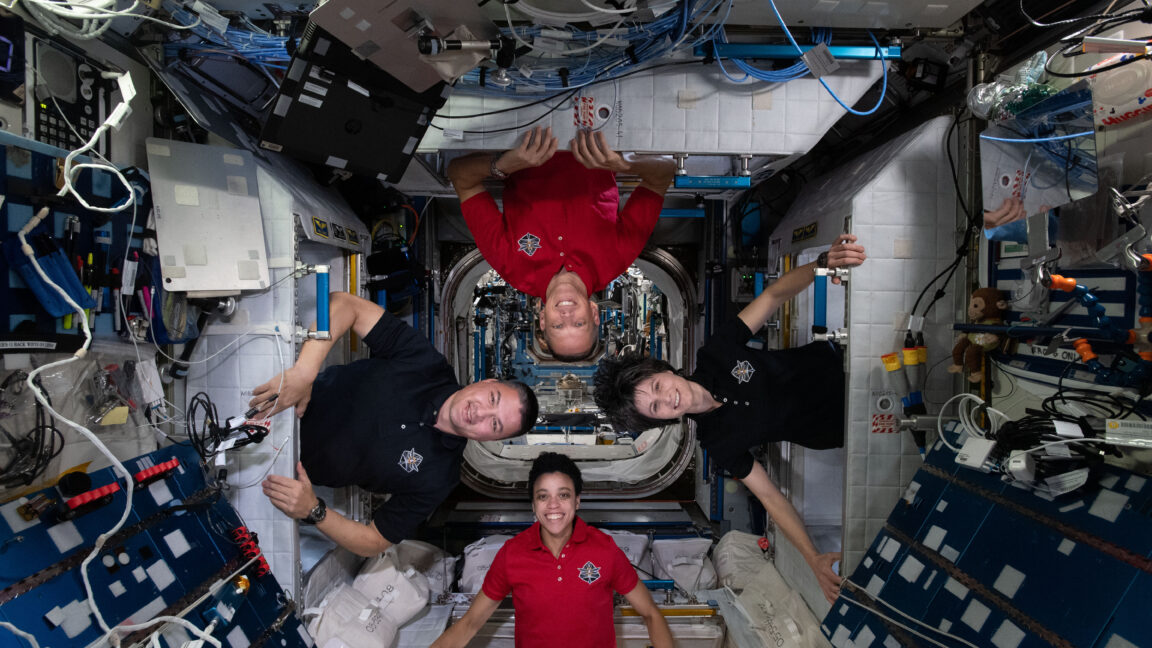 |
An small microbial ecosystem has formed on the International Space StationAstronauts on the International Space Station often suffer from various immune system dysfunctions, including allergies and skin rashes, even though they go through rigorous screening and are probably among the healthiest people on (or at least near) Earth. “It’s hard to pinpoint the exact causes for a lot of these symptoms, but we believe microbiome disruptions that happen in their bodies and in their environment up there could be playing an important part”, says Rodolfo Salido Benitez, a bioengineering researcher at the University of California, San Diego who co-authored the largest study on the ISS microbiome to date. After analyzing over 800 samples collected by astronauts in multiple modules of the United States Orbital Segment in the ISS, Benitez and his team concluded the microbial and chemical environment on the station closely resembled the one found at COVID-19 isolation wards during the height of the pandemic. And that may be less than ideal for keeping people healthy. Swabbing the space decksMonitoring microbial life on the ISS is an ongoing effort, and studies of this sort have been done before, although at a much smaller scale. “Previous studies used a low number of samples that could not identify all microbial and chemical factors present up there,” said Nina Zhao, a researcher at the UCSD and co-author of the study.
The swabs made for the study had two sides, so an astronaut would sample the same spot on the surface twice. Once on Earth, the swabs were separated, with one side going for DNA sequencing and the other side being used for mass spectrometry analysis to identify chemicals. “We applied some of the methods we use for monitoring extremely clean environments like the spacecraft assembly facility [SAF] that Jet Propulsion Laboratory employs to build the rovers they send to Mars,” Benitez said. When the results were in, it turned out that microbial diversity on the ISS was in fact similar to SAF—good for Mars rovers, but not nearly as good for humans. Orbiting COVID wardThe microbial genetic material collected on the ISS covered 6.31 percent of the entire phylogenetic tree. The majority of microbes on the ISS came there on the human skin. Aside from those, the taxa present varied depending on the purpose of the module where the samples were taken. The Unity module, which is often used for food preparation and storage, contained more food-associated microbes. The Tranquility module, which houses the Waste and Hygiene Compartment (otherwise known as “space toilet”), had more microbes from feces and urine. Largely missing were the microbes that live on plants, animals, and in the soil. When the team compared the ISS microbial diversity with places where people usually live on Earth, those 6.31 percent started to look a bit tiny. To put that in perspective, microbes found in Finnish homes covered up to 12.23 percent of the phylogenetic tree, while rural homes in South America saw the figure bump up to 15.59 percent. That was still bleak in comparison to rainforests or meadows; microbes living there covered up to 28.37 percent of the tree of life. The lack of diversity could be a problem, given that previous studies linked lowered exposure to diverse microbial environments with increased risk of chronic inflammatory diseases like asthma.
|
